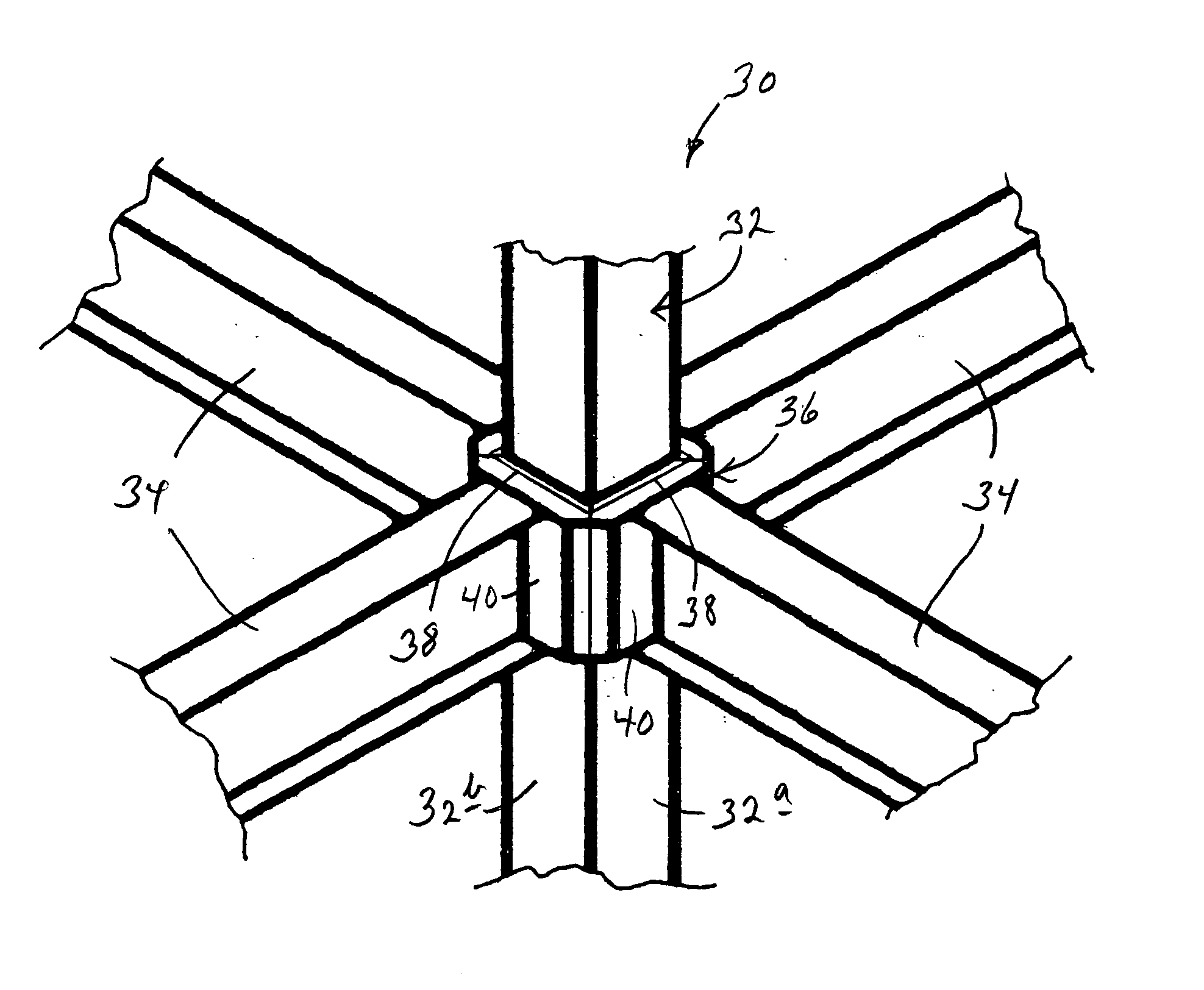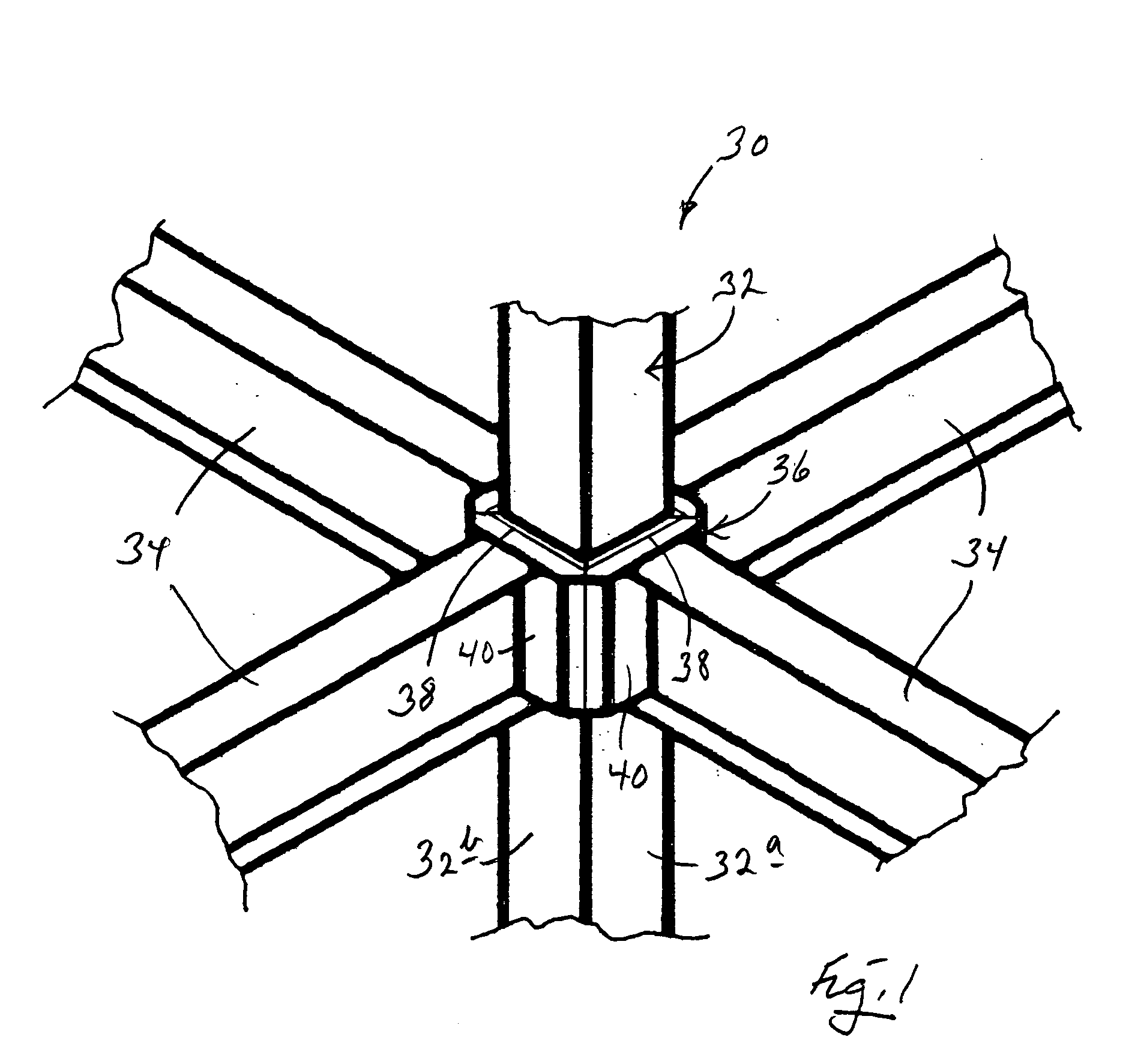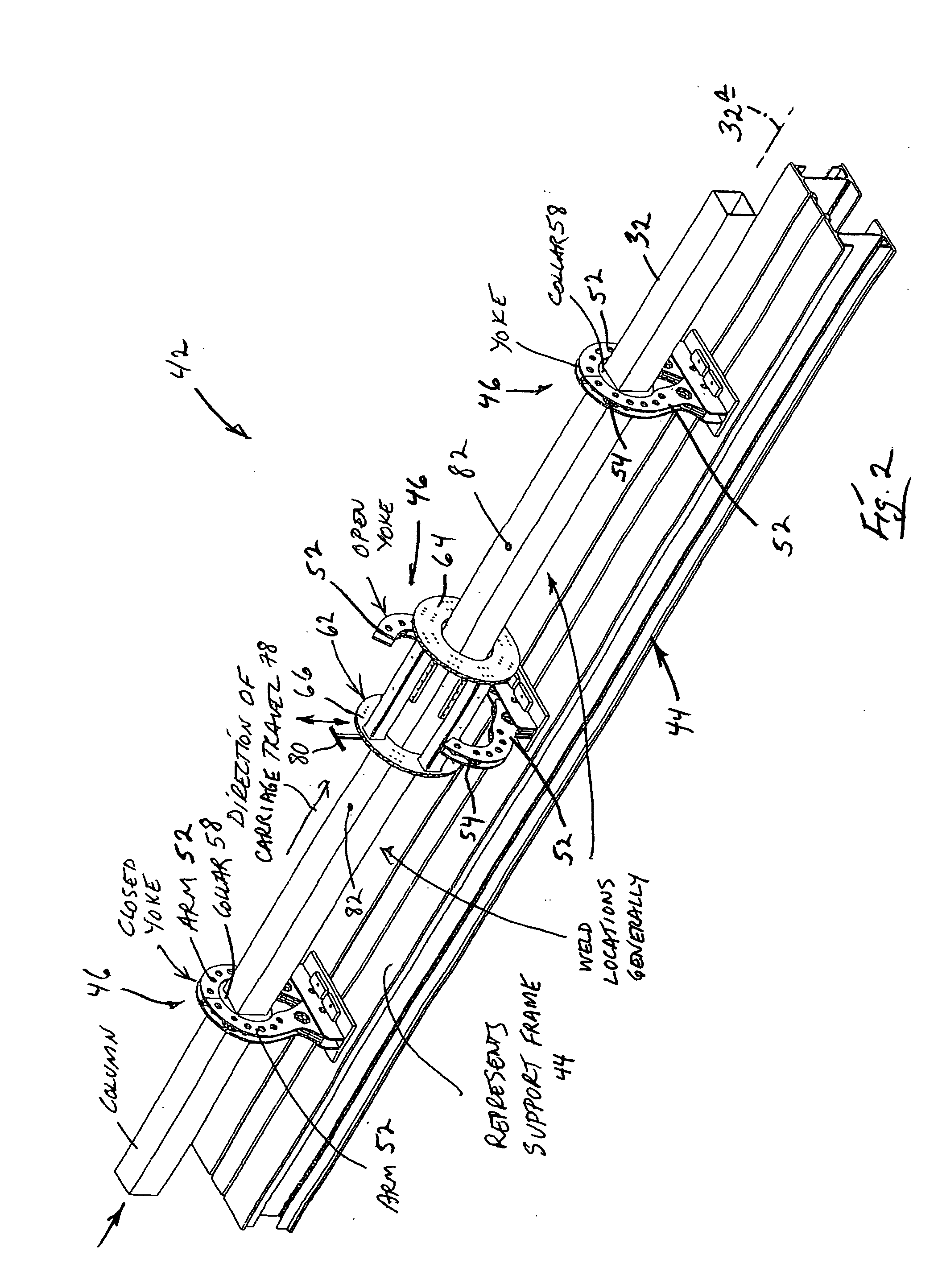Rotational method and apparatus for welding beam-mount structure to the side(s) of a column
a beam-mount structure and rotating method technology, applied in the direction of rod connections, joists, branching pipes, etc., can solve the problems of deformation, difficult to correct or manage, and difficult to solve the culpri
- Summary
- Abstract
- Description
- Claims
- Application Information
AI Technical Summary
Benefits of technology
Problems solved by technology
Method used
Image
Examples
Embodiment Construction
[0037] Turning now to the drawings, and referring first of all to FIG. 1, illustrated fragmentarily and generally, and also in a somewhat simplified form, at 30 in this figure are portions of a precision, close-tolerance structural building frame which has been constructed in accordance with the teachings of the above-referred to, prior-filed U.S. Patent Application. Frame structure 30 includes upright tubular, square cross section elongate steel columns, such as the single column shown at 32, two orthogonally related outside faces of which are seen in FIG. 1 at 32a, 32b.
[0038] Joined to the four orthogonally related faces, such as faces 32a, 32b, in column 32 are the ends of four horizontal I-beams, such as those shown at 34, with these I-beams being joined to column 32 through a style of collar interconnect structure 36 which has been constructed in accordance with the teachings of the referenced, prior-filed U.S. Patent Application. More specifically, collar interconnect structu...
PUM
| Property | Measurement | Unit |
|---|---|---|
| angle | aaaaa | aaaaa |
| length | aaaaa | aaaaa |
| resistance | aaaaa | aaaaa |
Abstract
Description
Claims
Application Information
 Login to View More
Login to View More - R&D
- Intellectual Property
- Life Sciences
- Materials
- Tech Scout
- Unparalleled Data Quality
- Higher Quality Content
- 60% Fewer Hallucinations
Browse by: Latest US Patents, China's latest patents, Technical Efficacy Thesaurus, Application Domain, Technology Topic, Popular Technical Reports.
© 2025 PatSnap. All rights reserved.Legal|Privacy policy|Modern Slavery Act Transparency Statement|Sitemap|About US| Contact US: help@patsnap.com



